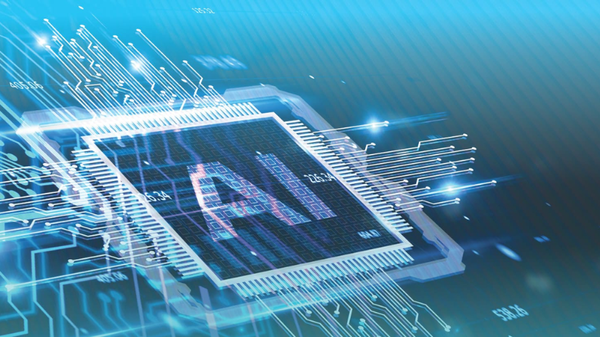How HR Leverage AI To Optimize Human Capital & Workforce Planning
Artificial Intelligence For HR: Use AI To Better Manage Human Capital
- Studies show that merging Artificial Intelligence (AI) into HR administration functions will benefit and improve the overall employee experience, providing increased capacity, time, budget, and more accurate information for decisive people management.
- AI allows Human Capital leaders to automate repetitive and low-value tasks so that employees can focus on more strategic work. AI can be used to source, assess, interview, and hire the right candidate for the job.
- However, Artificial intelligence for HR is only as good as the robustness of the data provided and collected, and even then, it does not guarantee perfect results.
Technology is ever-evolving and has permeated and influenced many different disciplines and industries, including human capital management.
Artificial intelligence for HR can help rather than hurt (i.e., steal jobs) human capital management and enhance the roles human resources (HR) managers and their staff play for a more efficient and effective organization.
In its report titled The new age: artificial intelligence for human resource opportunities and functions, audit firm EY notes that merging AI into human resource administration functions will benefit and improve overall employee experience, providing increased capacity, time, budget, and accurate information for powerful people management.
Using Artificial Intelligence for HR
With digital transformations, business leaders have difficulty building their workforce’s data literacy skills as data technology is advancing. Unfortunately, human capital is not equipped to know what skills are needed for hiring the right people with the right talents. That is why AI-integrated talent management platforms are designed for workforces to become highly mature data-driven organizations.
Some organizations may be reluctant to adopt AI as they do not see the value of investing in such technology.
However, here are six ways AI can assist the Chief HR Officer (CHRO) to manage human capital better:
1. Easy access to employee information
Employees can easily access personal and organizational data via a self-service portal that is intuitive and easy to use. Similarly, human resource personnel can access essential employee data that they are authorized to access, such as past employment history, personal details, and work performance.
Having a personalized dashboard and service portal empowers employees to explore human resource solutions on their own, having them feel in control of their work lives, thus creating a more engaged and happier workplace.
2. Personalised staff training programs
Heads of departments can plan online training programs for their staff after carrying out a skills assessment and studying recent trends and job requirements. AI can recommend learning programs for employees, informing the HR team what each employee needs to know and how to do it best. With AI, learning programs can be tailored for each employee and can even be carried out online.
Besides, AI can help further analyze individuals’ career trajectories based on their training programs. This could create more aligned teams within the organization, making management of employees easier and hassle-free.
3. Augment the hiring process
The recruitment process is always long, mundane, and full of paperwork.
HRTech has the potential to change this reality through the automation of such tasks. AI can be used to identify, screen, interview, and recruit the right candidate for the job.
In an article titled Integration of Artificial Intelligence in Human Resource, Ginu George and Mary Rani Thomas pointed out that AI is used by sites such as LinkedIn and Glassdoor; which leverages machine learning algorithms for job recommendations based on skills on resumes, keywords used by candidates, their search history, and connections in their network.
4. Automation of repetitive tasks
After hiring, AI can help with the onboarding of new employees, freeing up human capital management managers for more personal touch and interaction with new hires. This could likely result in more personalized employee onboarding programmes.
EY highlights in its report that AI allows HR to automate repetitive and low-value tasks so that employees can focus on more strategic work.
AI can guide new hires concerning company policies and history, provide personalized training programmes and assess the success of the onboarding process.
5. Talent retention and employee satisfaction
Ensuring that employees remain happy in the organization is a challenging task for CHROs. AI can help them see the employees in more dimensions, no longer limited to performance but also on the whys and hows.
This can help them set personalized performance plans for employees, promote work-life balance, and strategize how to motivate and retain employees beyond offering material and monetary benefits.
AI can also provide real-time feedback to employees and human resource management teams to improve employee performance. Keen, a platform by Netherlands-based KeenCorp, analyses employees’ emails through sentiment analysis and provides real-time information on employee engagement.
6. Predicting future turnover
In their article To Study Impact of Artificial Intelligence on Human Resource Management, Prasanna Matsa and Kusuma Gullamajji highlight that predicting future turnover is essential for an organization.
They suggest that Artificial intelligence for Human Capital planning can utilize past data to predict and forecast employee churn “more accurately than ever before,” allowing the organization to carry out necessary changes.
A word of caution, however, AI works like a human only if data quality and its consistency are maintained. It takes a huge effort to collate employee data with AI. But it is worth the effort once the entire system is in place.
Simultaneously, employees’ data and privacy must be prioritized, and proper measures are taken to ensure that the data is kept confidential and secure.
Finally, leveraging AI for HR functions is only as good as the robustness of the data provided, and even then, there is no guarantee for perfect results. What it does well is significantly eliminate human errors and bias, helping humans make better decisions.
It is obvious that while AI is not 100% perfect, its benefits certainly help human capital managers to overcome the challenges in making decisions.
How The Center of Applied Science uses AI
Following bettering human capital management, CADS has taken up AI to hire suitable managers and HR directors, so how does it work?
CADS has invented a proprietary model called Data-Driven OrganizationTM ; a maturity assessment model was used for digital businesses to gain an advantage by focusing on prioritizing and aligning leading indicators. This model had provided and recommended organizations’ comprehensive action plans.
The Data-Driven Organization model concentrated on six key areas: strategy, culture, talent, analytics, data, and technology. The comprehensive action plans are given to each of the locations for organizations to gain insights into their workforce skills. Those key areas will undergo these five phases: discovery, awareness, assessment, enablement, and delivery.
Currently, at CADS, Acceltic is used; AI capabilities, data, and analytics are incorporated to build up human capital. Managing human capital is done by providing relevant data literacy upskilling, career development, improving employee’s experience, view talent pools, hiring proficient data literate talents.
Skills assessments to verify data literacy in the workforce will be available along with certifications. Data literacy skills inventory can be viewed to find gaps in each organization’s department; personalized learning paths are created to fulfil the individual’s data literacy skills. With improved skills, there will be job and project opportunities awaiting for the employees.
Priority access to Acceltic
If you are keen to use the unique tool developed for better workforce planning, reach out to our team of consultants for a demo of Acceltic and discover how it can benefit your organization.
For more information, visit www.thecads.com or contact us via email: engage@thecads.com.
About the Author
Sharala Axryd | Founder and CEO | The Center of Applied Data Science (CADS)
With a passion for data science and over 15 years of experience in the telecommunications field under her belt, Sharala Axryd leads data-driven business transformation and drives the ASEAN region’s benchmark for data science education. She is an award-winning entrepreneur in AI and Data Science and the founder of the first-of-its-kind Human Capital Management platform. She hopes to one-day future proof of the workforce against the rapid changes in technology.





